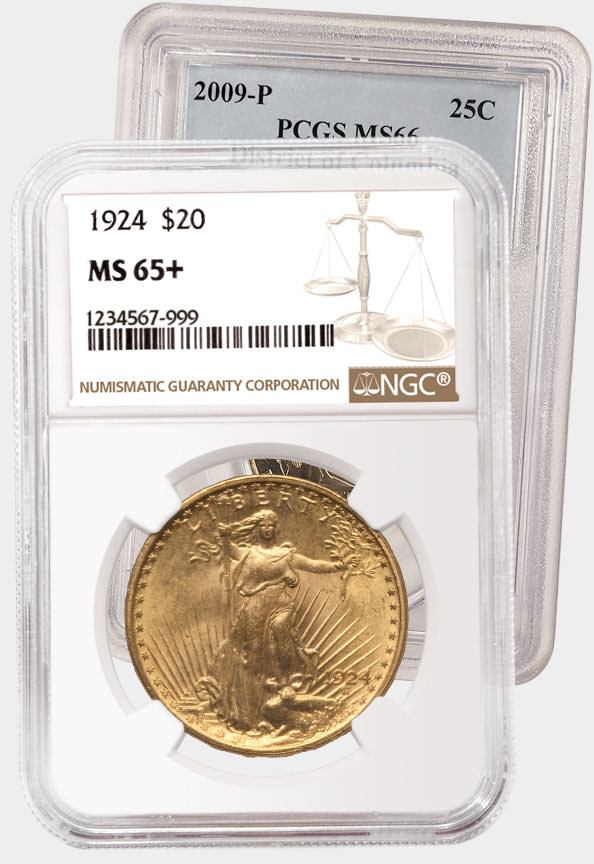Jeff Garrett: Tips on How to Collect Capped Bust Half Dollars
Posted on 3/31/2022
 |
When I wrote an article recently about collecting coins by die variety, Capped Bust Half Dollars were one of the series mentioned. The series, which was produced from 1807 to 1836, is rich with interesting die varieties for specialists. Since United Stated silver dollars were not produced during this period, half dollars were the workhorse coinage of the day. Most years were struck in copious quantities and are generally available in lower grades for what I think are amazing bargains.
For these reasons, this series deserves close attention for anyone looking for their next numismatic journey. The following are few things to consider:
There are several ways to collect Capped Bust Half Dollars, many of which can be achieved with a relatively modest budget.
 |
For those wanting to take a deep dive, collecting by die variety is perhaps the biggest challenge. The standard reference for the series is “Early Half Dollar Die Varieties,” by Al Overton (several editions). The book was written decades ago but has stood the test of time. Several specialty books have also been produced, with detailed attribution information.
There are about 450 different die varieties for a complete set of Draped Bust Half Dollars. Many are rare and some are exceedingly rare. One of the most exciting aspects of collecting Bust half dollars by die variety is the thrill of looking for unattributed rarities. Occasionally, an entirely new variety or die marriage is discovered. These usually make headlines in the numismatic press. NGC is often called upon to verify the discovery.
Serious collectors of this series are a close-knit group, and have a club devoted to the study of Bust Half Dollar varieties. Membership into the Bust Half Nut Club is by invitation and you are required to have at least 100 die marriages. Until recently, the group closely guarded rarity and grading census information, but the Information Age has made that more difficult. For anyone interested in getting involved, there is plenty of help to found, both from experts in the field and through publications.
For those wanting to collect Capped Bust Half Dollars by die variety but to a lesser extent, there are other options. Many Large Cent and Capped Bust Half collectors focus their collecting on trying to assemble as many varieties as possible that are listed in the “Guide Book of United States Coins,” also known as the Red Book. It lists only the most dramatic varieties for each year, and generally skips the ones that are nearly impossible to collect. The classic variety for the series that is listed in the Red Book is the 1817/4. These are very rare and sell for six figures when offered at auction. Finding one of these unattributed is the dream of most Bust Half Dollar afficionados.
Collecting series by Red Book variety has become much more common in recent years as collectors seek challenging but achievable goals.
For the average collector, assembling a year set of Capped Bust Half Dollars (1807-1836), can be fun and done within the budget of even the most frugal individual. There are just a few relatively tough Capped Bust Half Dollars when putting together a set by date. The 1807 Capped Bust Half Dollar is somewhat scarce but can be found for about $750 in Very Fine condition. The 1815 is the “key date” for the series, and costs around $5,000 in Very Fine. Other than these two dates, most of the other dates can be purchased for about $150 each in Very Fine condition. These seem like incredible bargains for a coin struck in the infancy of our nation. The coins are a fascinating reflection of the rapid growth of the United States during this period.
 |
 |
| 1815/2 Half Dollar graded NGC VF Details and pedigreed to the Eric P. Newman Collection Click images to enlarge. |
|
As mentioned above, eye appeal is one of the most important aspects of collecting Capped Bust Half Dollars. This applies to even the lowest-grade examples. Finding problem-free examples of circulated coins is quite challenging. When we purchase collections of these in lower grades, usually less than half of the coins would qualify for third-party grading without comments (cleaned, scratched, damaged, stained). Higher-grade coins are often darkly toned, with somewhat negative eye appeal.
Coins that display colorful album toning can sometimes bring multiples of catalogue for the grade. The stupendous collection of Eric Newman that was certified by NGC and sold by Heritage several years ago had many such examples. As always, focus on buying quality coins and, when it comes time to sell, you will be richly rewarded.
The next time someone shows you their collection of modern coins, wow them with your miniature works of art from the early history of the United States.
Want to see more articles like this? Subscribe to the free NGC Weekly Market Report.
Stay Informed
Want news like this delivered to your inbox once a month? Subscribe to the free NGC eNewsletter today!
